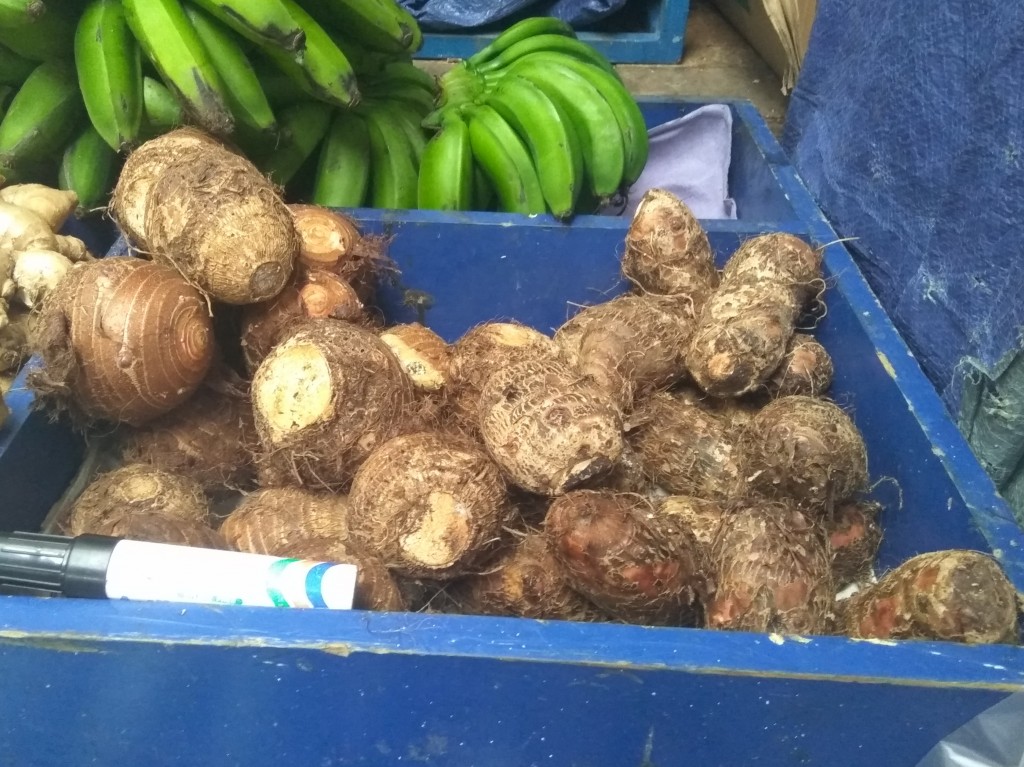EAT IN ASIA / Destinations / Other destinations / Central america / Costa rica
18 TOP Most popular vegetables in Costa Rica
Tags: COSTA RICA
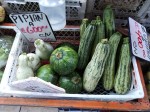

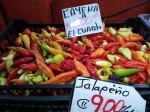
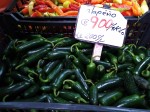

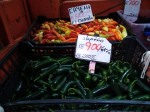



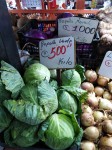
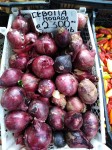
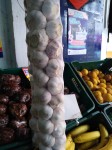
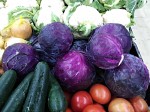
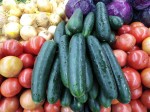



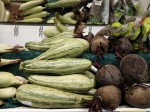

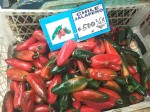
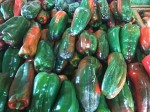
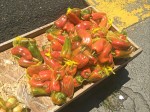
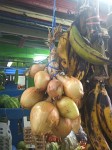
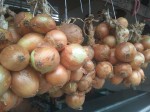
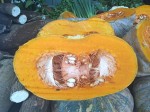

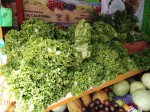
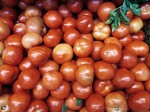
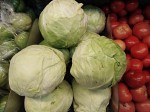

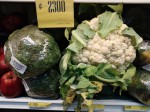
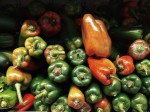




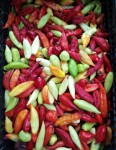


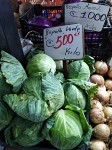


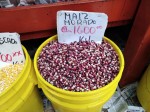
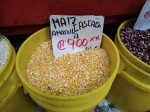
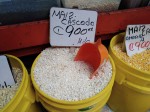

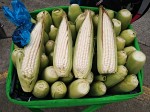
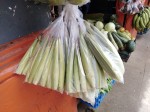

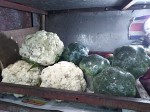


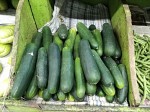


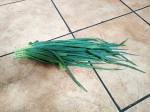
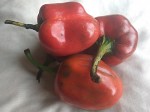
When you go to a Costa Rican local fresh food market, you will be surprised how colorful it is. Fruits (read more about exotic fruits in Costa Rica) and vegetables in multiple colors, shapes and sizes. Smelly, ripe and tempting to buy them. Comparing them to what you can get in a supermarket is rather impossible. These, that are offered on local markets and by small street sellers are perfect in their imperfectness. With dots, in irregular shapes, not standardized, smaller and bigger, less and curvier, just whatever you can imagine. And although they do not so ideally as these in big markets, they are wonderful.
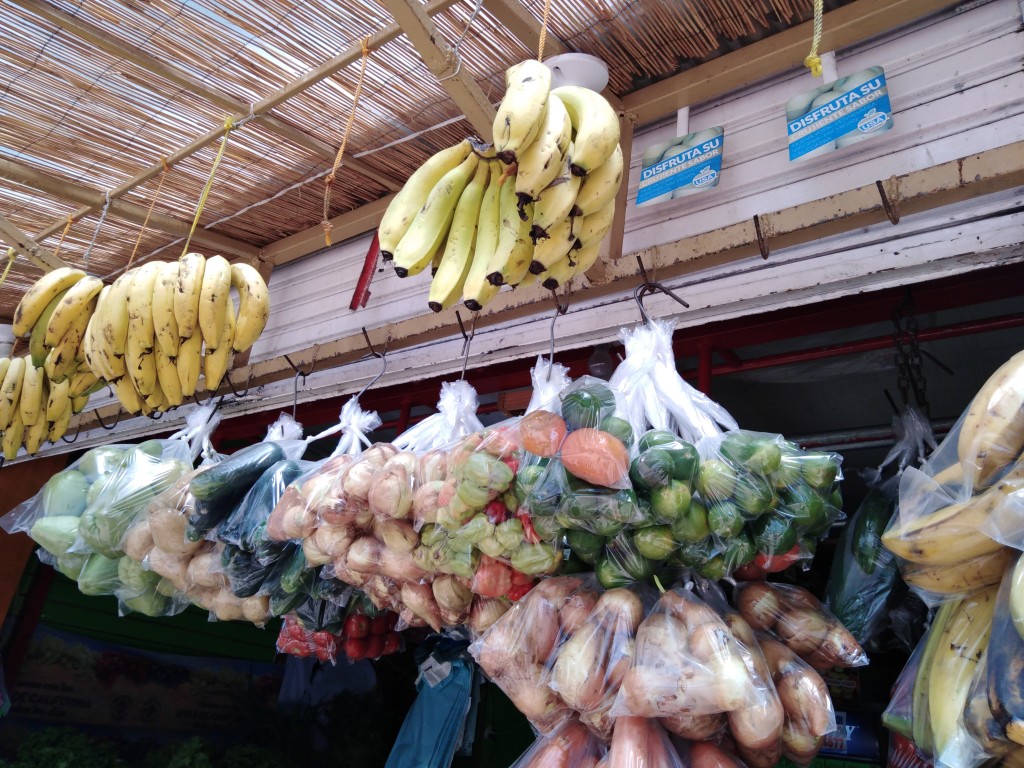
They are so natural, with no unnecessary improvement and with no modifications. They are as they grew. Taken directly from a tree or plant. With scars and dots that are impossible to be accepted on big plantation delivering their crop to supermarkets. But, thanks to that, you feel that they are more natural, more healthy and deprived of any unnecessary modifications. Of course, probably some pesticides and fertilizers are used, but not in such an amount as in big factories. Sometimes, you might even have an impression, that these vegetables or fruits come directly from a small garden and are only that could not be consumed by the selling them farmer. So, we really recommend you buying fruits and vegetables on local fresh food markets. Not only will you get a product more natural, but you will also help farmers and support their families. So, if you are accustomed to making you shopping in big markets, while in Costa Rica – get out of your comfort zone and change your habits!
1. Corn
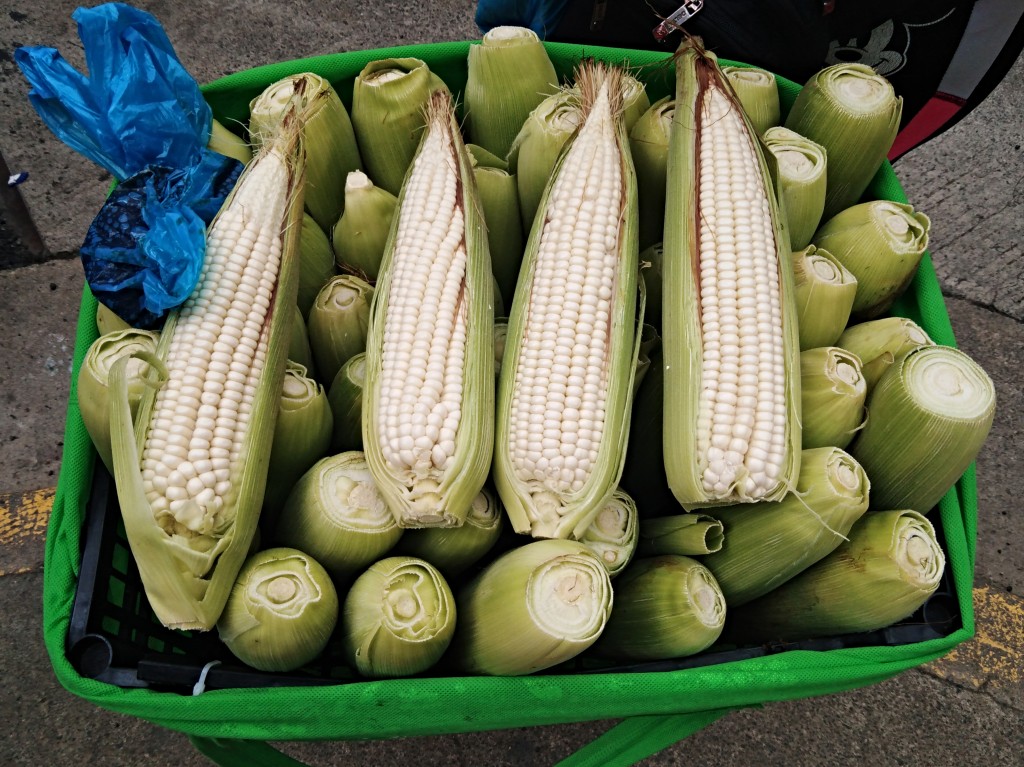
Corn is with no doubt one of the plants that is widely used in whole Central America. Corn from the cob, corn tortillas, corn is in soups, served with meat, rice and other vegetables. Corn starch and flour are used for baking, cooking and as a natural thickener to many products. It is added to desserts, soups, bread, buns, cakes, custards, jellies and many, many more.
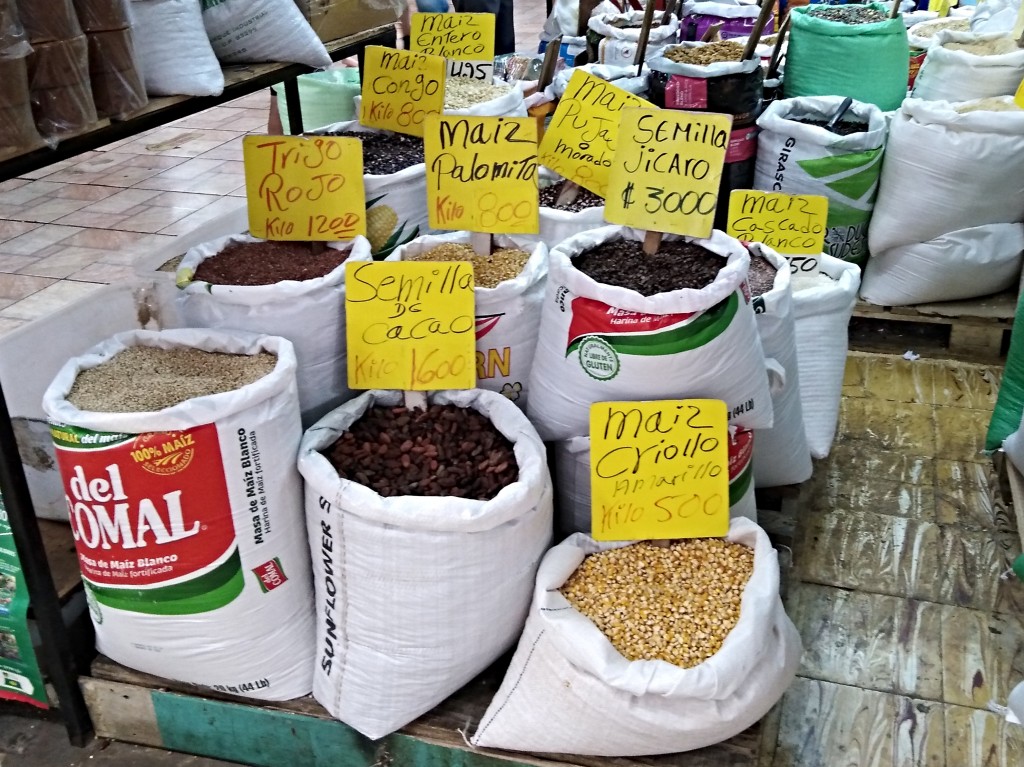
When you go to a local market, you will find a lot of places where you could buy corn grain, flour and the whole vegetable. You can choose between a regular yellow corn, white and purple.
These food markets usually offer four types of corn – cascado – crashed, what means that corn kernels are at the beginning dried and then crashed into smaller pieces:

then you have whole grained corn – purple – morado:
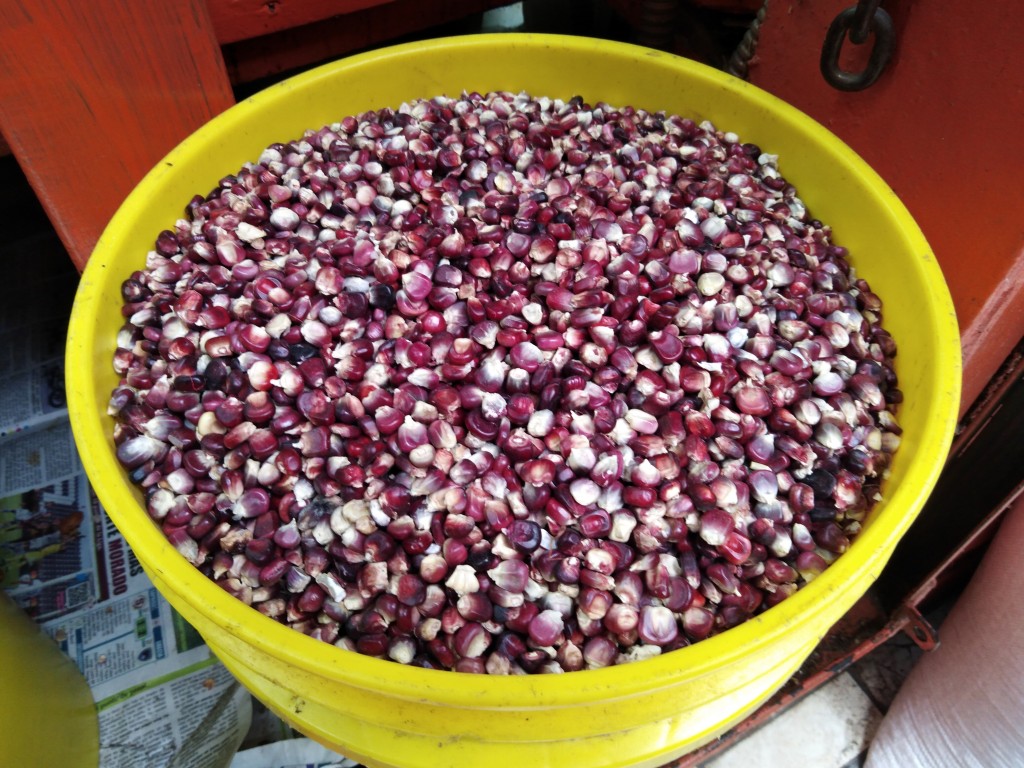
yellow – Amarillo (here on the picture it is a crashed yellow one):
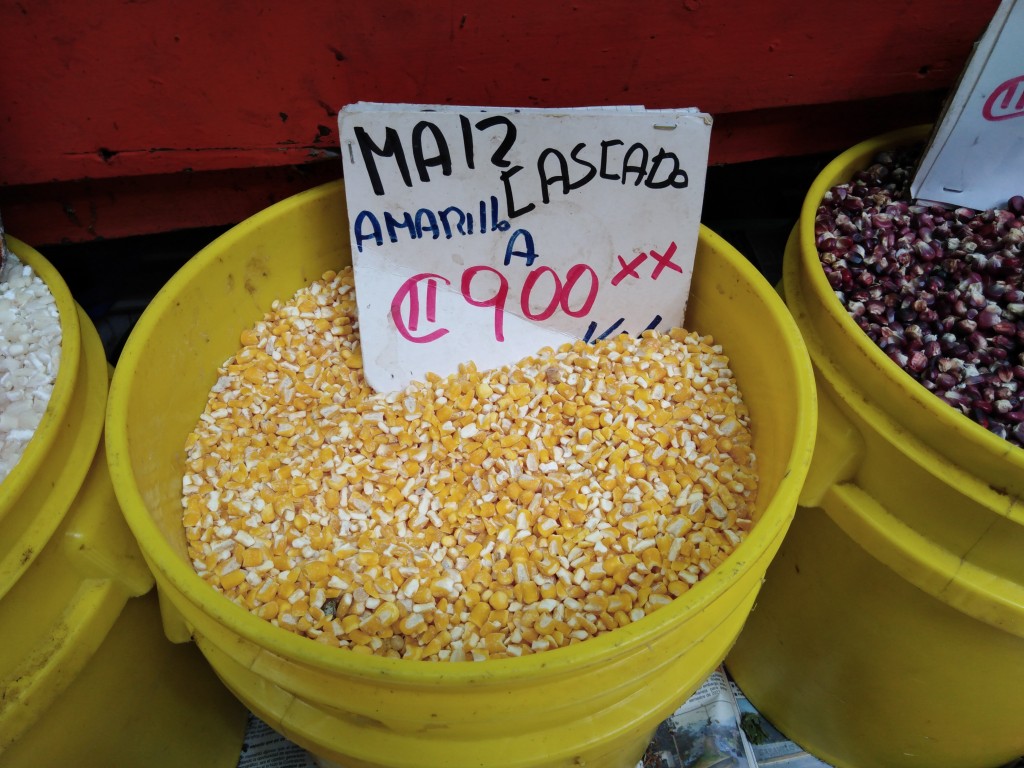
and white – blanco:
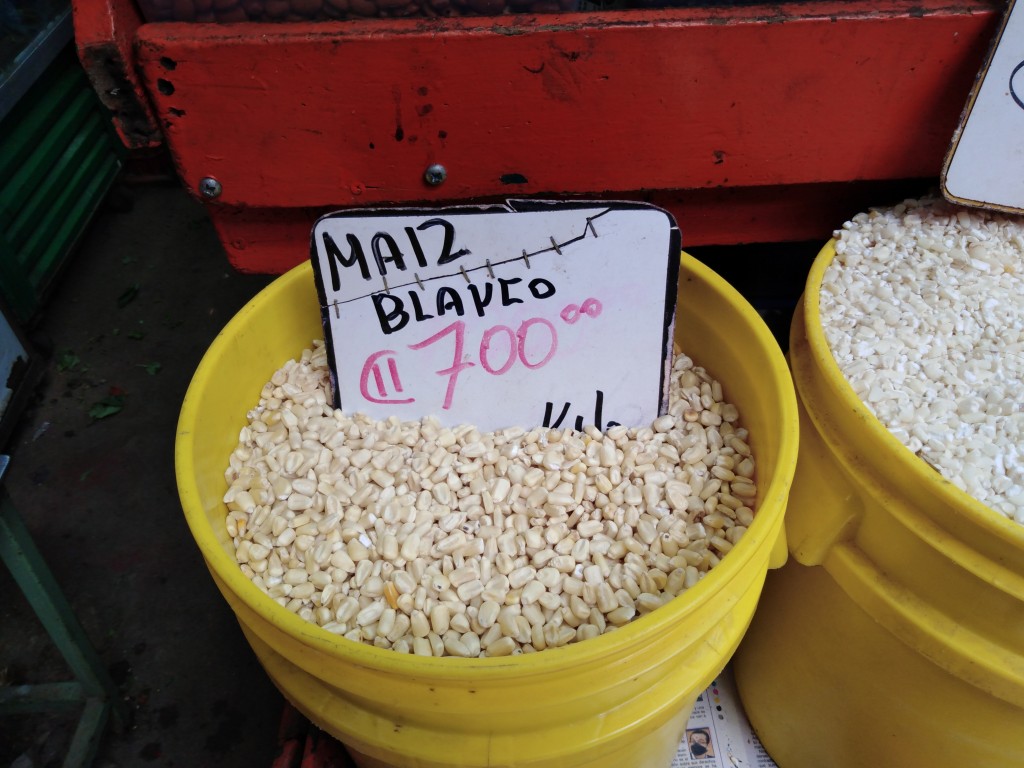
Basing on the amount of corn products in Costa Rica, you might be sure that it is an important element in their cuisine.
And that is not surprising as in 2014 the Costa Rican government declared corn as a Cultural Heritage!

Corn in Costa Rica is part of almost every meal. It can be in starters, main courses, desserts and desserts. A lot of staple dishes include corn. Just look at the famous Costa Rican soup ‘olla de carne’, ‘arro de maíz’ prepared from ‘cascado’ – crashed corn and at the so popular corn tortilla.

As an appetizer you will get ‘tamalitos de elote’ or ‘tamales de elote’. Talking about desserts, you might find ‘Hammaní’, a creamy dessert typical for the African cuisine originating from Limon, Costa Rica. It is a delicious dessert, that basis on the corn flour, coconut milk, cow milk, cinnamon and sugar. It is served either cold or warm. Then you have so typical ‘chorreadas’ that are made from the whole-grain corn flour and sugar or salt, and then, after forming a round, pancake-like dough, they are fried on both sides.
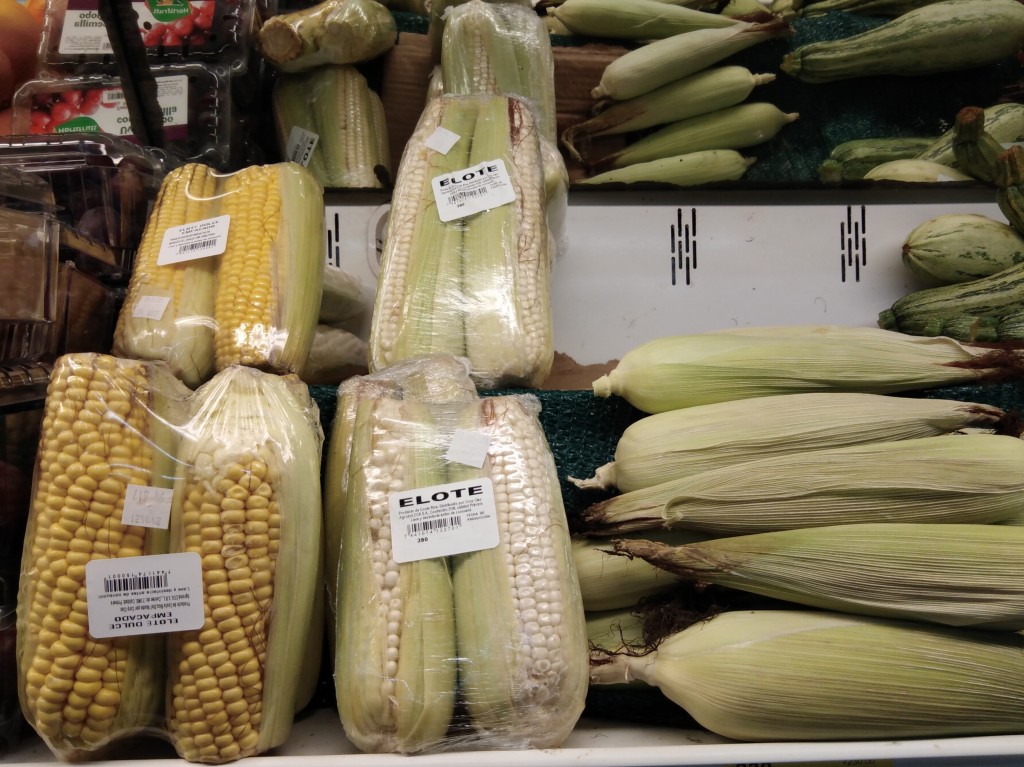
So, basing on the number of traditional Costa Rican dishes that include corn, it is definitively one of the most important products in the country.
In other places, for example in Mexico (we wrote about ‘elote’ in the post Best Mexican street food) the whole corn is grilled or boiled and served with salt, lime, chili, cheese, mayonnaise or ketchup. Apart from that, you might find also street-stalls selling ready to go, warm corn in small, paper cups.
2. Yuka - yucca
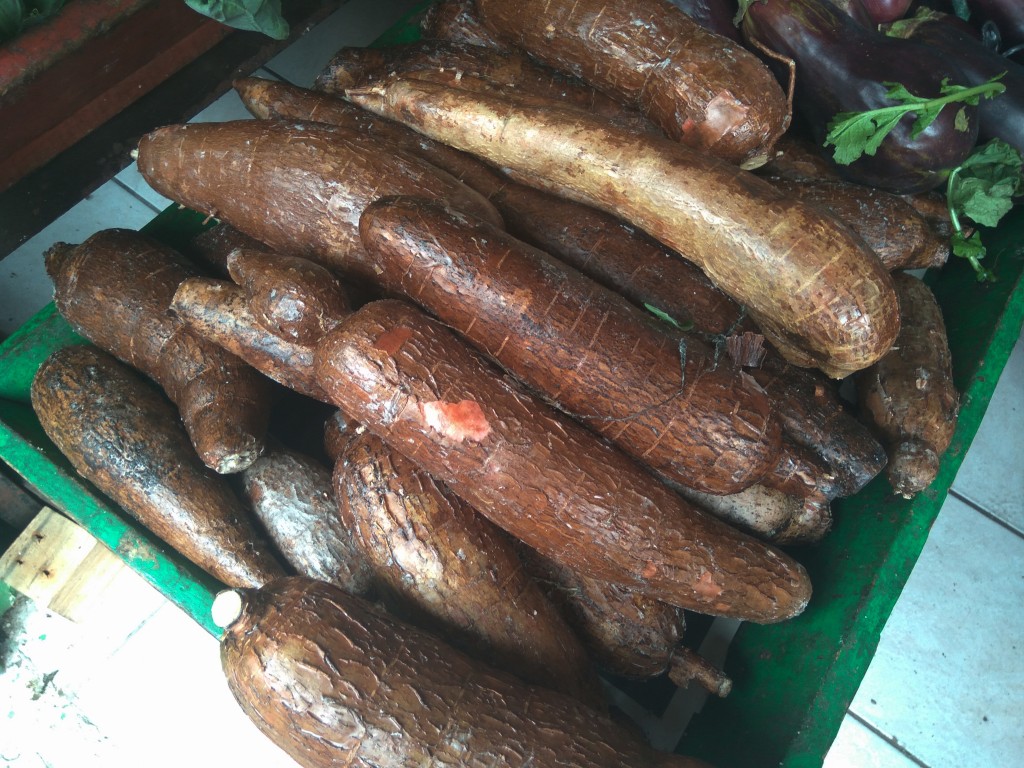
Long, brown from outside and white inside, in a shape of a giant carrot. These words describe yucca in the best way. Yucca is from a tuber family and without any question, it is one of the most popular vegetables and also tubers in Costa Rica. It is relatively cheap; it is nutritional and is a good source of healthy carbs. About yucca and other tubers we wrote more in the post Tropical tubers in Costa Rica, so if you are interested, just read it too.

There is no overexaggerating in saying that yucca replaces potatoes. It is cooked in the same way. Yucca is boiled and added to stews or soups. There is also a Costa Rican yucca purée! Sometimes it is added to desserts and bakery products too.
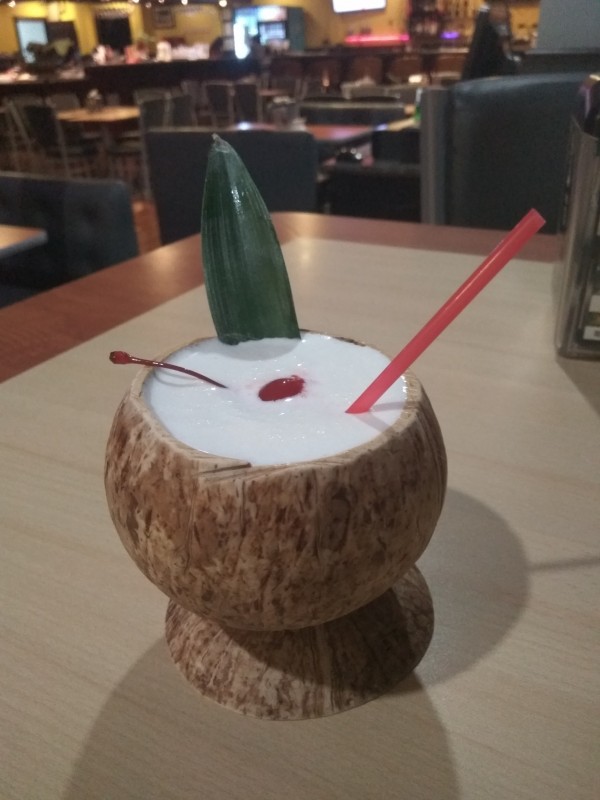
However, the most surprising way of serving yucca, is to use t for a drink – yucoco. A mix of a yucca purée with coconut milk, condensed milk and rum. It is really good! So, if you have any chance of trying it, don’t miss it!
3. Pepper - chili - pimienta
Costa Rican cuisine is not the spiciest one. Of course, it does not mean, that there is no dish that is really hot, or that you cannot get extremely spicy peppers or salsas. No, that is not the case, surely you can, and you can ask for it in any ‘soda’ or restaurant. However, most of the dishes that you order, although include pepper, is not so spicy. I would say – are mild. Have a nice spicy taste, but do not burn your mouth and throat.
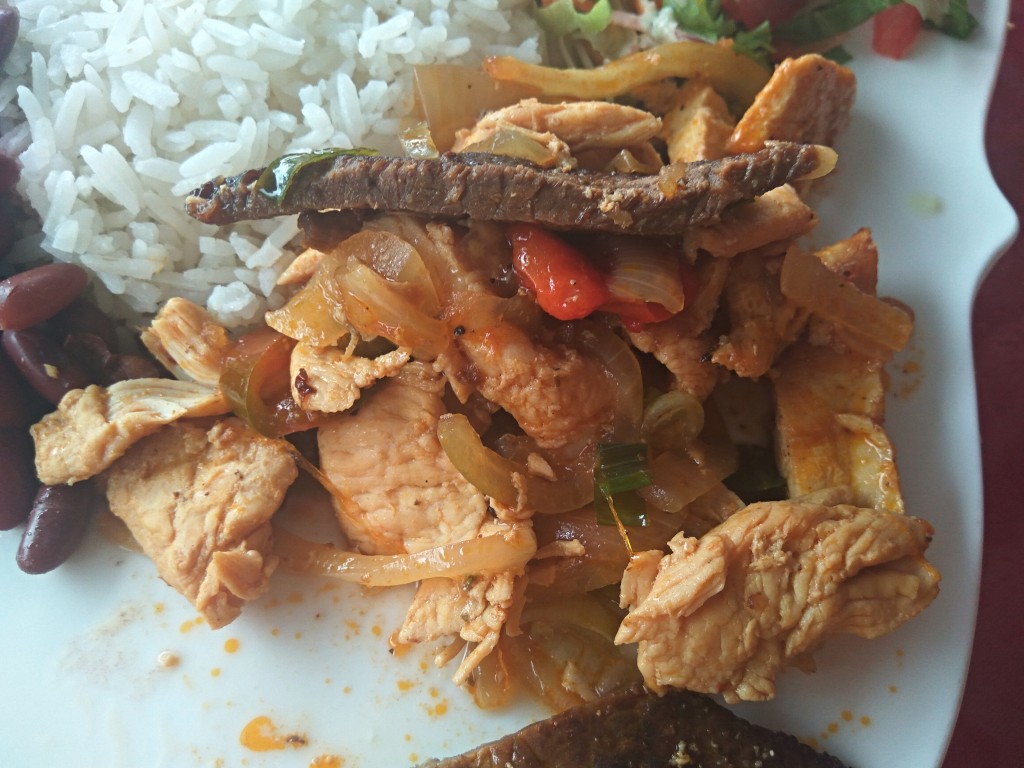
Peppers are sold per item, kilo or bag. Some of them are mild, even sweet, and some are spicy. The color and shape do not define the spiciness of it. Apart from that, you can buy dried pepper flakes, dried whole peppers, pepper in powder or in a partially dehydrated pulp that is ideal for preparing meats.

The most popular ones are sweet peppers – chile morrón/dulce, cayenne pepper – pimienta cayena, chile Panameño – a Habanero type pepper, rocoto and jalapeño.
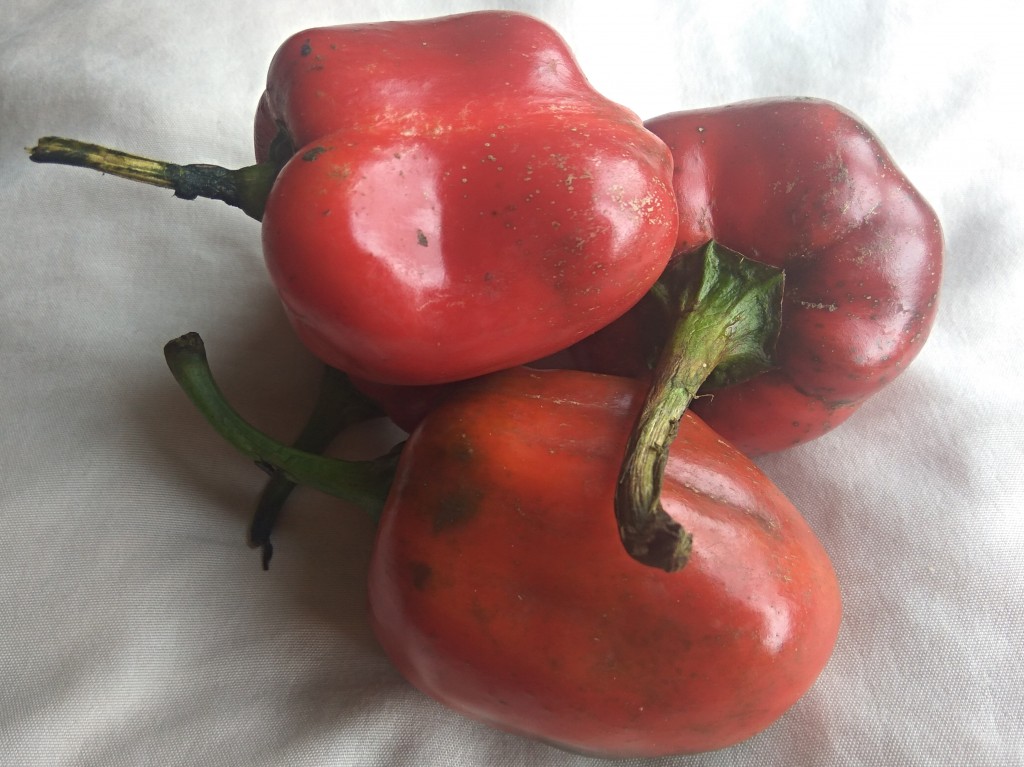
Chile morrón – bell pepper, has its specific spicy taste, that after time becomes sweeter. Its fleshy and has an interesting cubic shape. It can be green, yellow, orange and red and this color is changed during the ripening process. During that process, the spiciness and the sweetness of the pepper changes. While at the beginning it is spicy, with time it is getting more and more mild and finally sweet. Ripening also changes peppers content on vitamin C and beta-carotene.

Cayenne pepper – pimienta de Cayena, has an intensive spicy taste like a chili pepper. Its name derives from the name of the city of Cayenne in French Guiana where it was cultivated. It is very popular but used moderately.
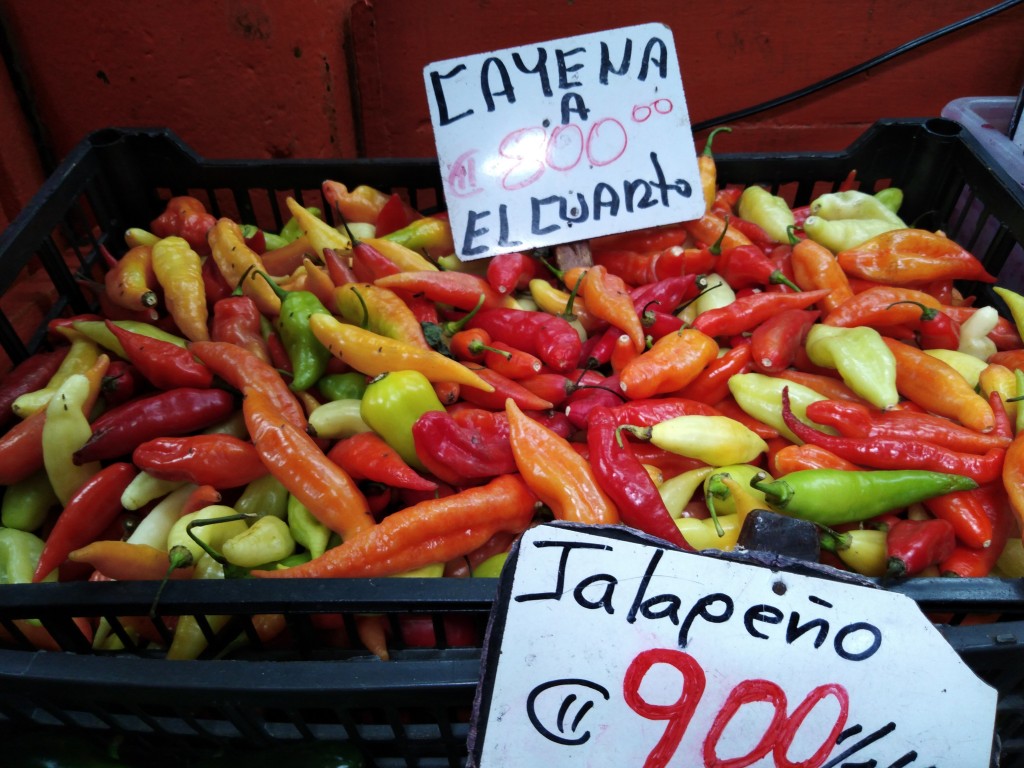
Then you have a famous jalapeño pepper. It is hot; however, its spiciness and pungency can vary. As in the case of chile morrón, it changes color and spiciness during the ripening process, starting from green, through yellow and orange, till it gets the red color.
Usually, it is picked while still green, but in some cases, it is kept till the end of the maturing process. The green one is also the mostly consumed one and the one that is the most popular on markets. It is body is firm, 5 to 10 cm long and 2,5 to 4 cm wide.
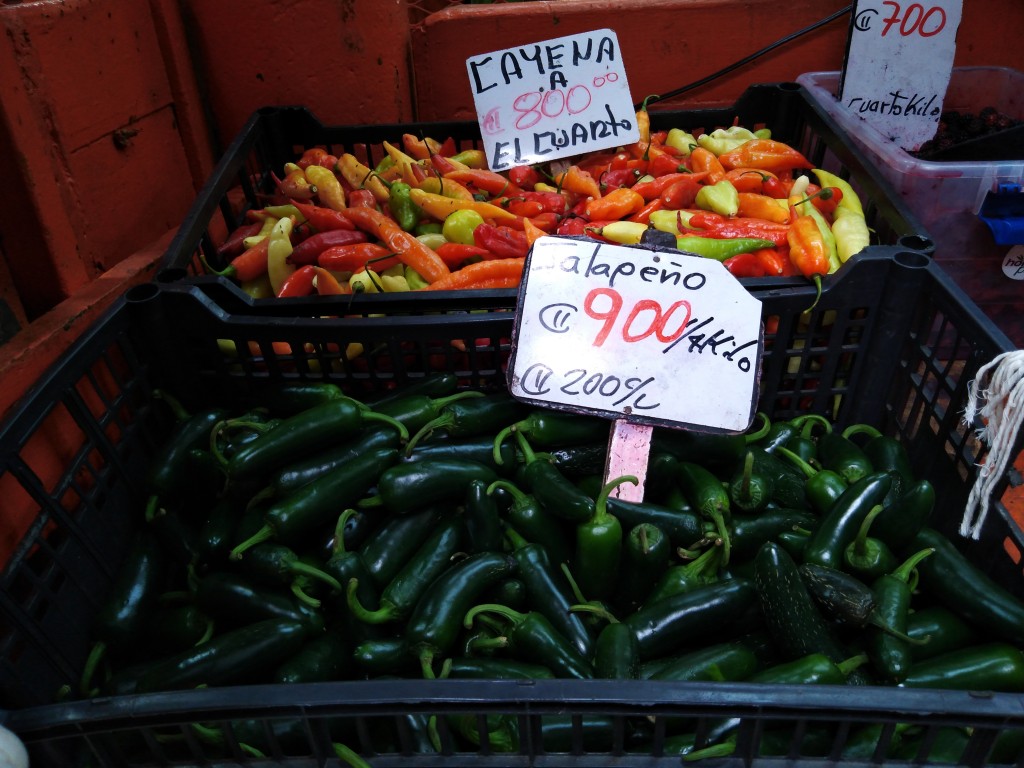
Chile Panameño is another commonly sold pepper on food markets. It is one of the spiciest peppers in the world, but that you probably already know. It has a lot of capsaicin that works as a natural anti-inflammatory supplement and it is said that it might relieve headaches. It can have different colors starting from green, through yellow, orange and till red. It is relatively short but also wide.
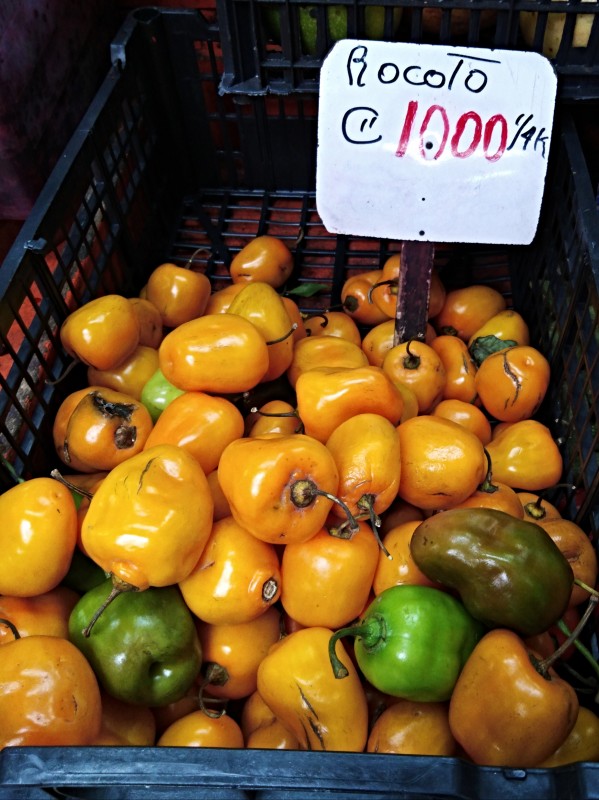
Finally, worth mentioning is rocoto pepper. Its original name (pubescens) derives from pepper’s leaves look. As they are hairy, this name was applied to this variety. What is unique about this pepper, is the fact it has black seeds and can grow in colder areas than other peppers.
4. Camote – sweet potatoes
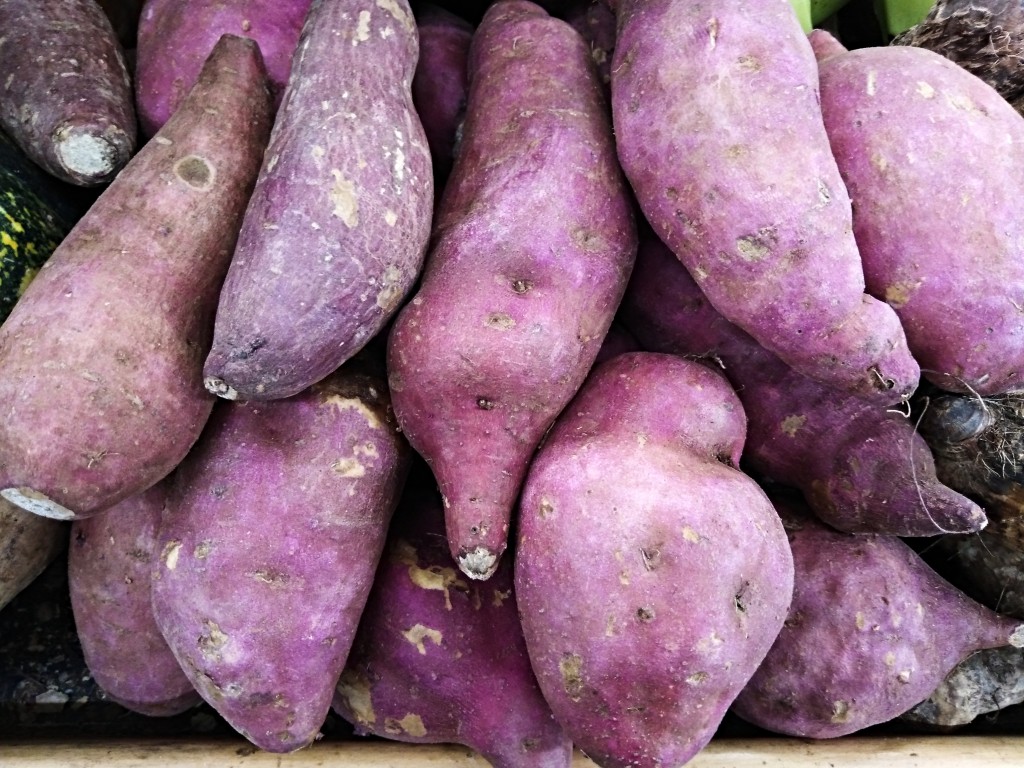
This purple-skin tuber is one of the most popular ones in Costa Rica. Of course, yucca is with no doubt on the first place, but you will definitively see a lot of camote on markets and in shops in Costa Rica. What might be a little bit misleading, camote is not purple inside. The inner part is yellowish or rather of a pale orange color. Camote is a sweet potato that replaces in Costa Rican cuisine regular Western potatoes. Before eating it, you have to boil or cook it in any way, as it is with all other potato-like vegetables. You can serve camote almost in all same forms as you prepare potatoes. You can just boil it. You can fry, roast, cook and grill them. It is up to you what you want to have. Use your imagination, be creative and try to include camote to your diet when you are in Costa Rica!
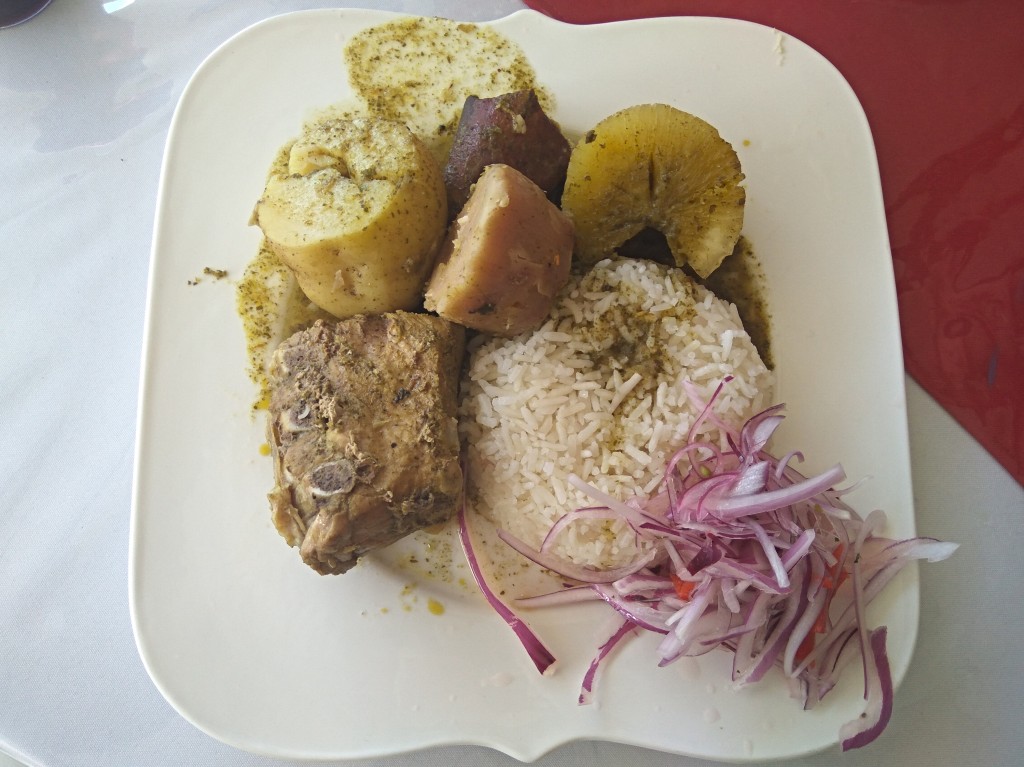
If you want to know more about camote and its nutritional benefit, go to the post Tropical tubers in Costa Rica. Maybe that will convince you, that it is really worth eating it.
5. Tomatoes

Tomatoes are another very popular vegetable. They are sold in big packages of even three or four kilos. Although the most common tomatoes are these regular ones, you might also find places with more expensive cherry tomatoes, that are usually used for garnishing dishes.

Usually, tomatoes are served raw in salads, in side-dishes and in ‘ceviche’. They are finely chopped and very often mixed with onion and red, raw pepper.
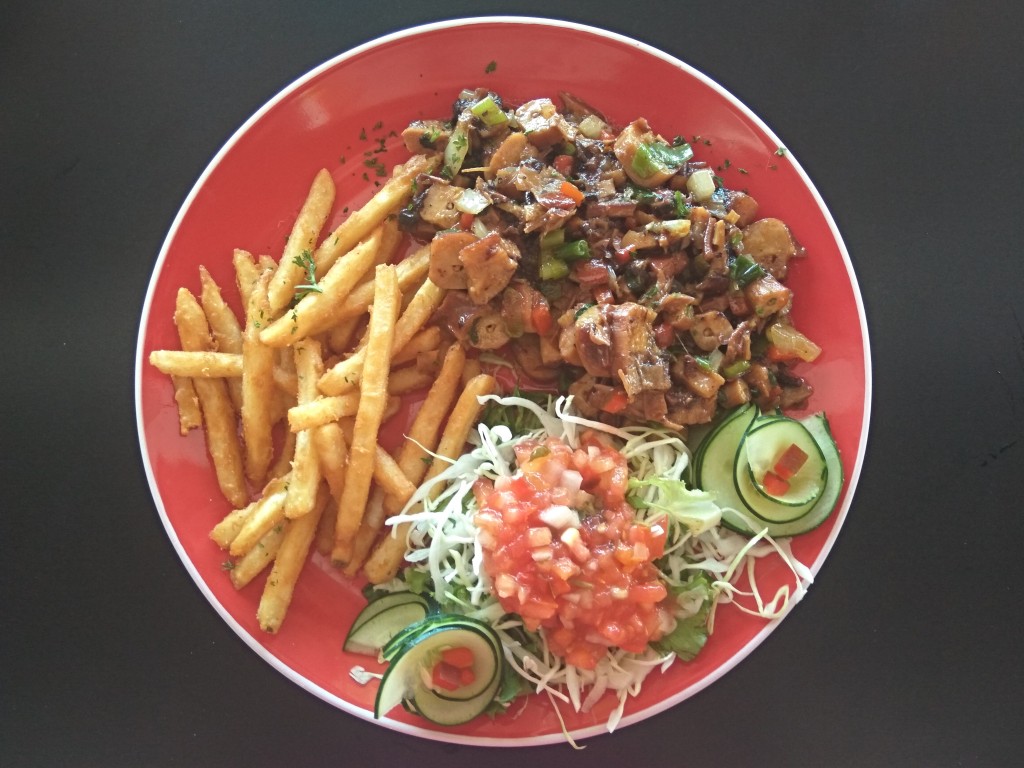
Tomatoes are also included in stews, soups and salsas, where they are mixed with other boiled vegetables. Mainly they are added to sauces and served with squashes or tubers.
6. Tiquizque
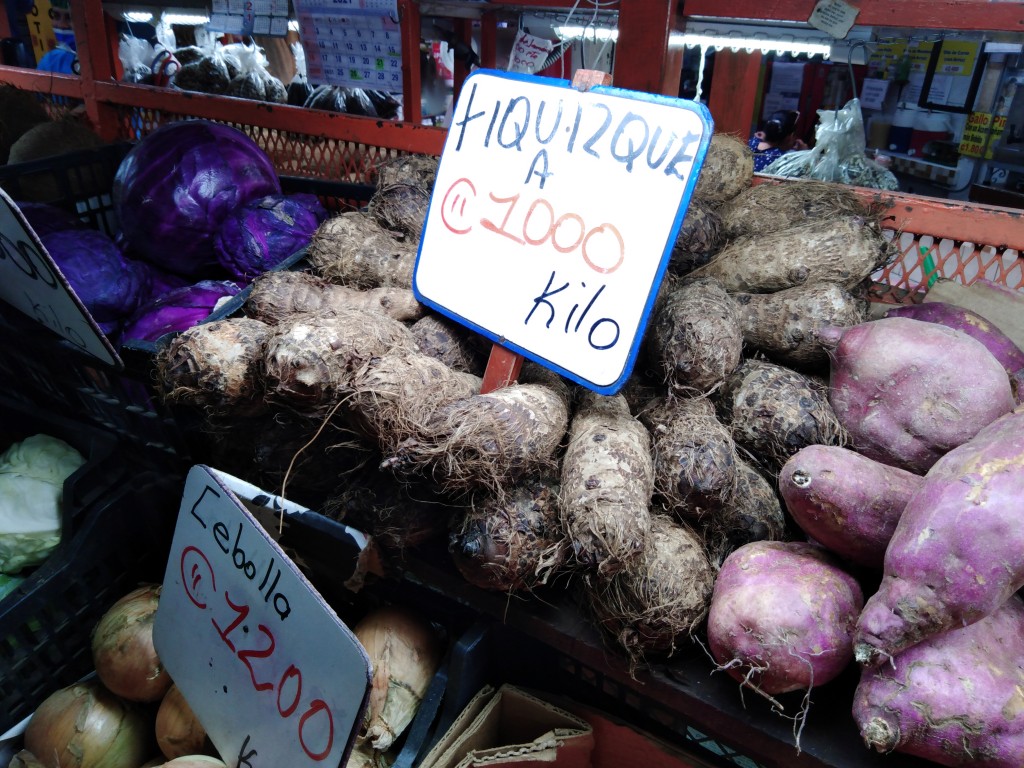
Although it is very often confused with taro – ñampí, tiquizque is a different tuber vegetable that is popular in Costa Rica. If you want to know more about it, read the post Tropical tubers in Costa Rica. It is brown root similar in length and shape to a combination of a beetroot and parsley. However, it is less regular in shape and more smaller roots. Usually, it is either eaten alone instead of potatoes or camote - sweet potatoes, or it is added to stews and soups.
7. Garlic
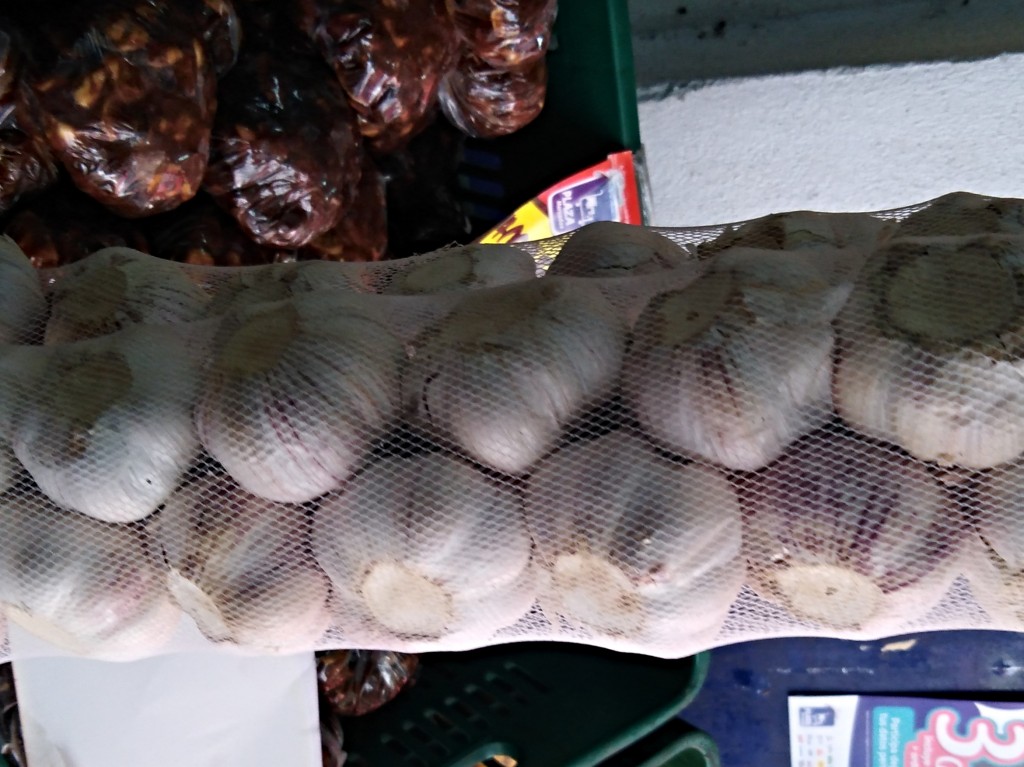
The garlic smell is not so popular in restaurants and sodas as in Asian countries, but it does not mean that it is not used. It is one of the most popular condiment that is used in almost every dish. It is added to soups, stews, rice, meat and fish dishes. It also plays a key role in marinates and sauces for ‘ceviche’ and is almost always used for preparing different seafood dishes. Garlic is soled per piece - bulb, per kilo, in plastic bags grouped in three or four or in long string of twenty of more bulbs.
8. Nampí - taro
About ñampí we wrote more in the post Tropical tubers in Costa Rica. Taro known in Costa Rica as ñampí is one of the list of superfoods.

It is eaten cooked or fried. Mixed with other vegetables, added to soups and stews. Finally, it is also added to sweets and desserts giving them a special color and flavor.
9. Pejibaye

We wrote more about pejibaye in the post 5 TOP ‘Tico’ vegetables. Apart from that, that it is very healthy, pejibaye is used in multiple ways in Costa Rica. Pejibaye pulp is added to poultry recipes, eaten roasted as an appetizer, dehydrated and used for preparing a strong alcohol. Pejibaye palm tree hearts are very appreciated, liked and can be eaten raw or cooked.
10. Zucchini
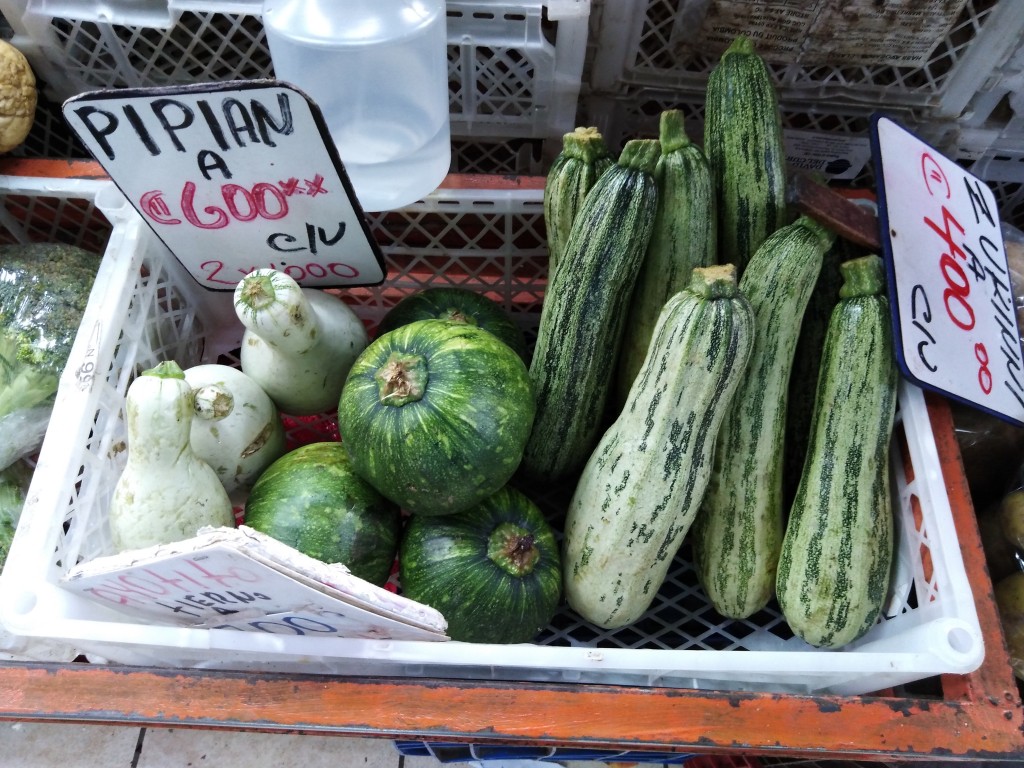
Zucchini is not one of the vegetables that are eaten raw or alone. Usually, you will find them in stews, picadillos and soups. Mixed with other vegetables, mainly of the squash family and tubers, zucchini is a base of warm, creamy dishes. Sometimes it might be boiled or slightly grilled on a pan with broccoli, cauliflower or carrots. It is served with fish, some seafood and poultry.
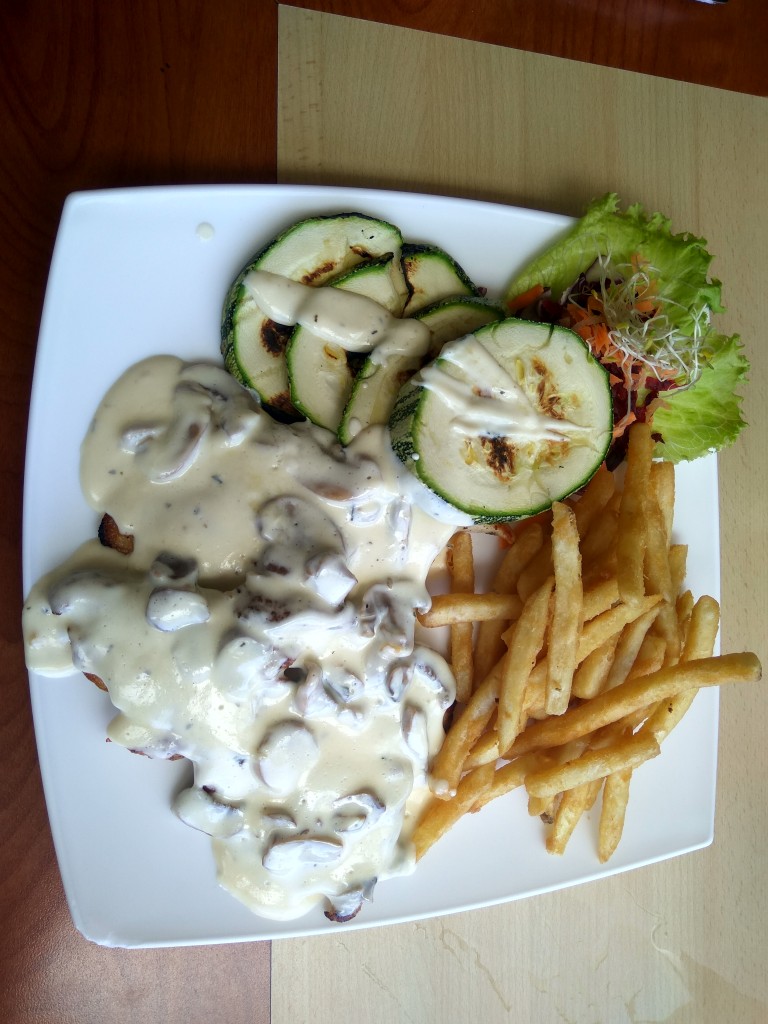
Rarer, you would get it as a side dish to any beef or pork meal. When it is young, them it is served with skin. When it is mature, then before preparing it, it is peeled. Usually, it is served soft and not crunchy.
11. Onion

Onion plays a key role in all marinates and ‘picadillos’. No matter whether it is white or red, it is extremely popular in fish or seafood ‘ceviche’. And that is really good about it. Onion is semi-spicy, has a strong flavor and greatly improves the taste of the meal.
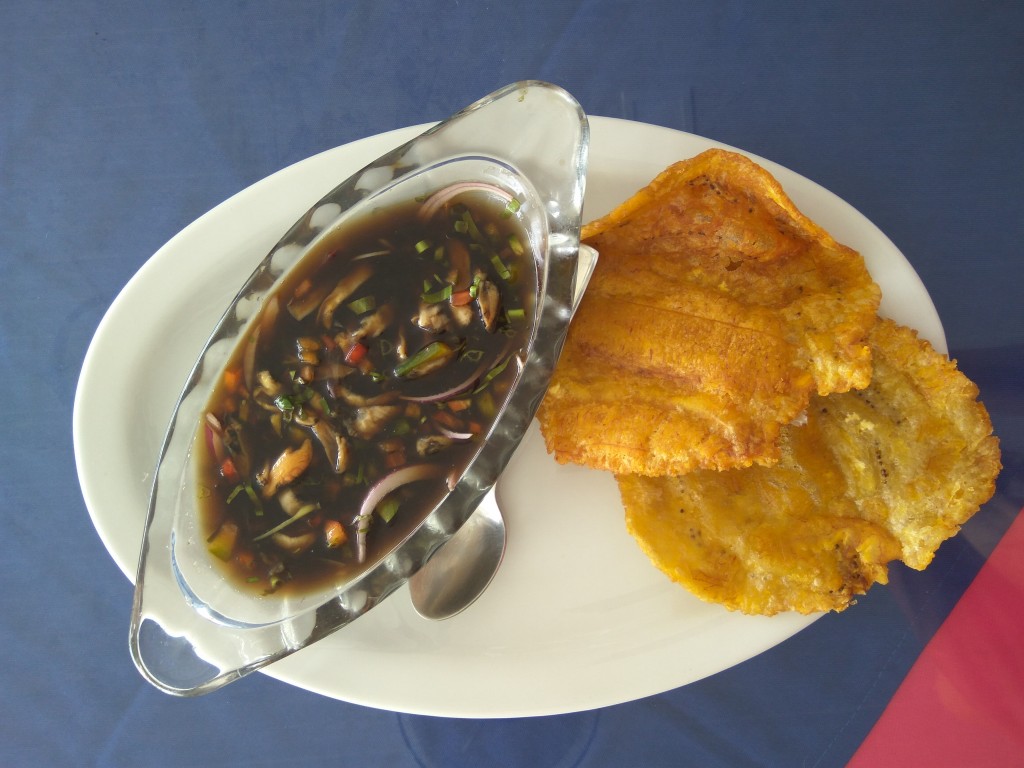
When served with seafood, it is strong aroma is ideally balanced with a mild and delicate taste of marinated fish. when mixed in the ‘ceviche’ marinates, onion gets ‘this’ special seafood flavor. In consequence, it creates a meal with a composition of contradictory flavors and textures. Crunchy onion rings or finely chopped pieces are in contradiction to soft and a little bit chewy fish chunks.
Apart from using onion in ‘ceviche’, it is added to a very popular marinate called ‘picadillo’.
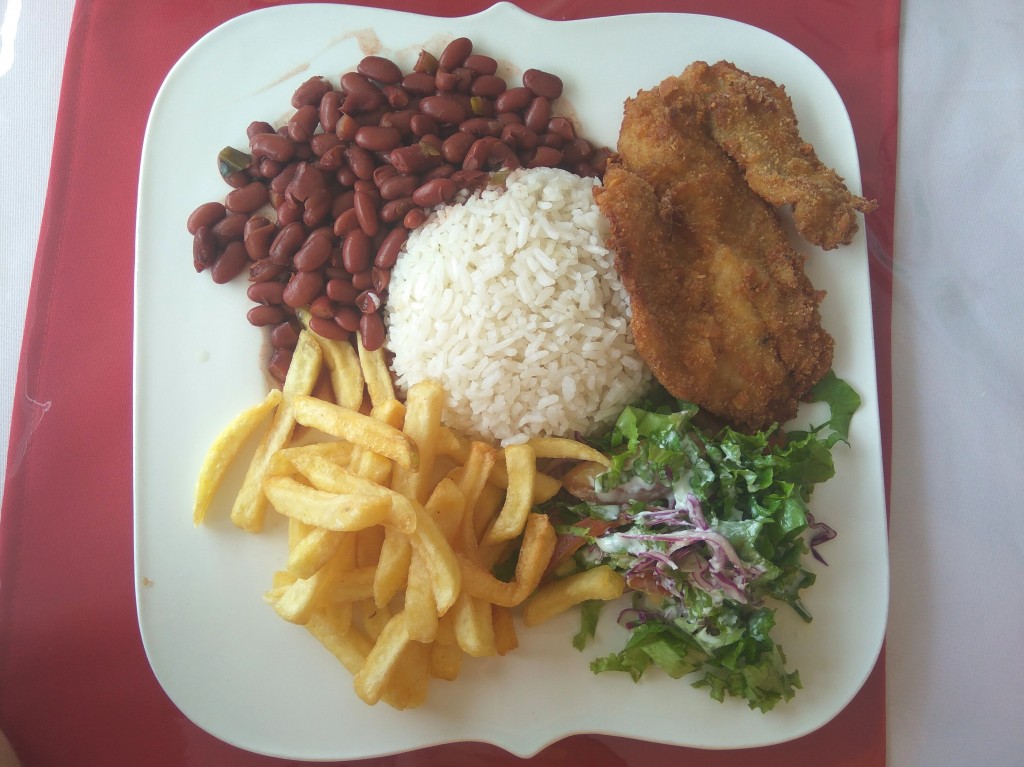
Onion is also added to raw side-dish salads and as a garnish.
If served processed, there is wide choice of dishes that include onion. First of all, you will easily get fried onion rings served as a starter, side-dish or as a snack that would be proposed while ordering beer.
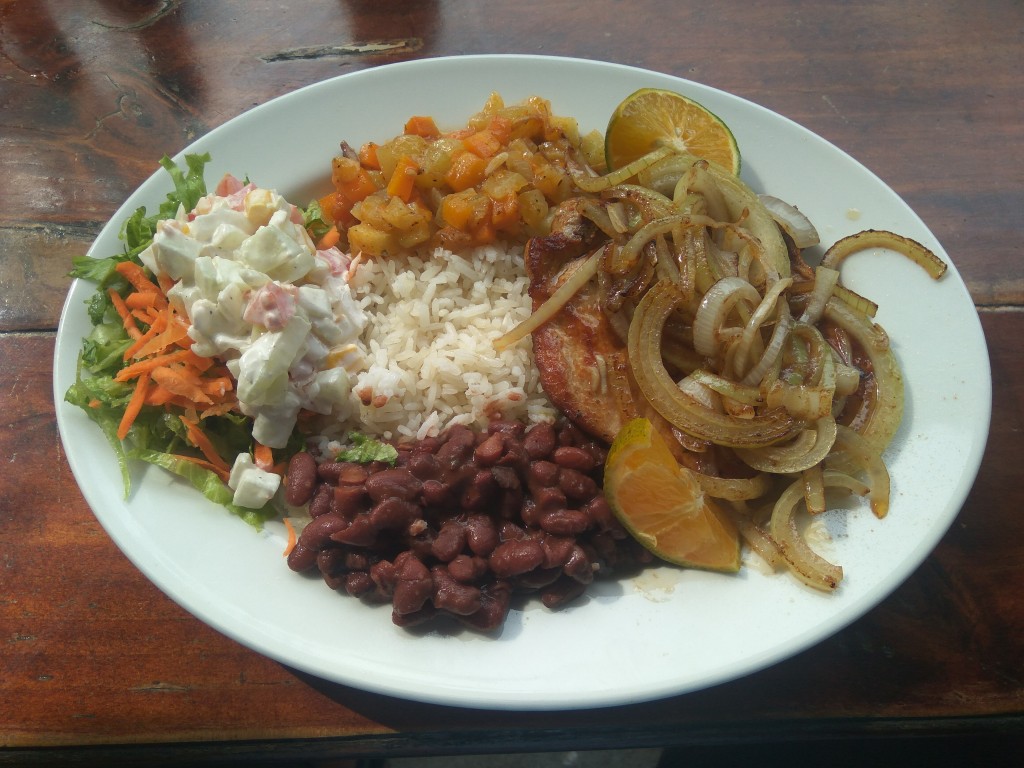
Then, you will get it fried and topped on a beef or pork cutlets. Onion is also added to almost all Costa Rican soups and stews.
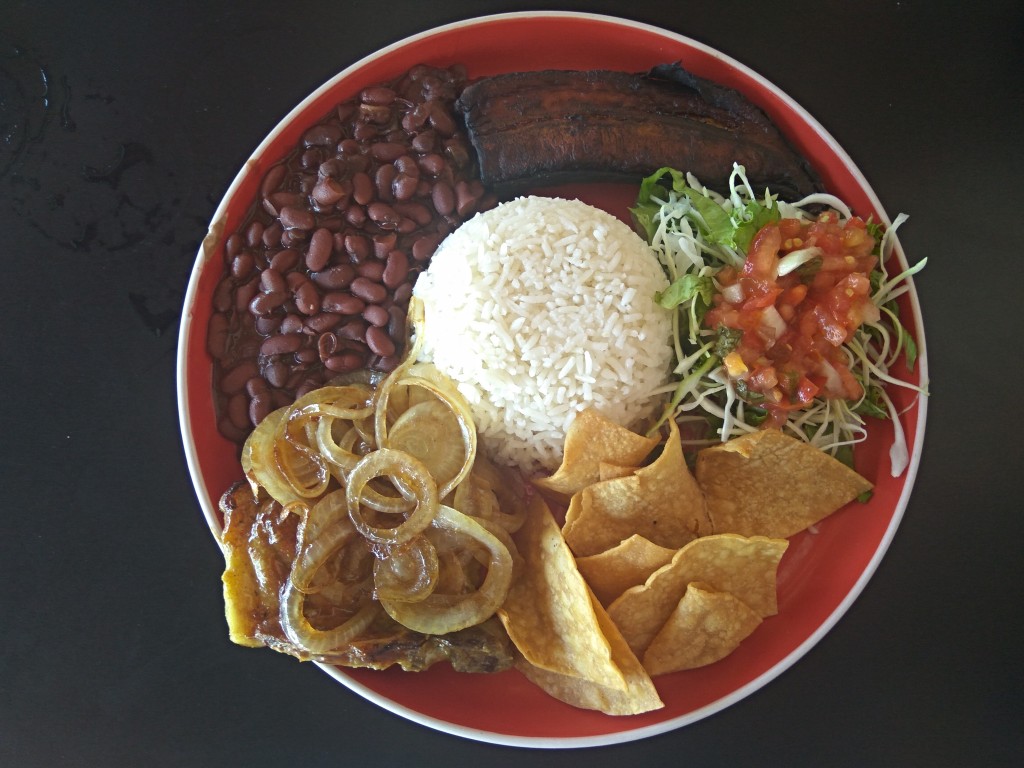
You will also find it finely chopped in rice and noodle meals, in salsas and sauces, no matter in which region of the country you are.
12. Lettuce

Comparing to other vegetables, lettuce is extremely cheap in Costa Rica. However, although the price is so low, lettuce is not so popular. Probably the main reason is, that raw salads are seldom in the Costa Rican cuisine.

Hardly ever, you will find a main dish salad with chicken, pork or beef slices, fish or seafood. No. Usually the salad you will get, will be the one served with chopped tomatoes, cucumbers, onion and cabbage as a side-dish to ‘casado’ or other main courses.
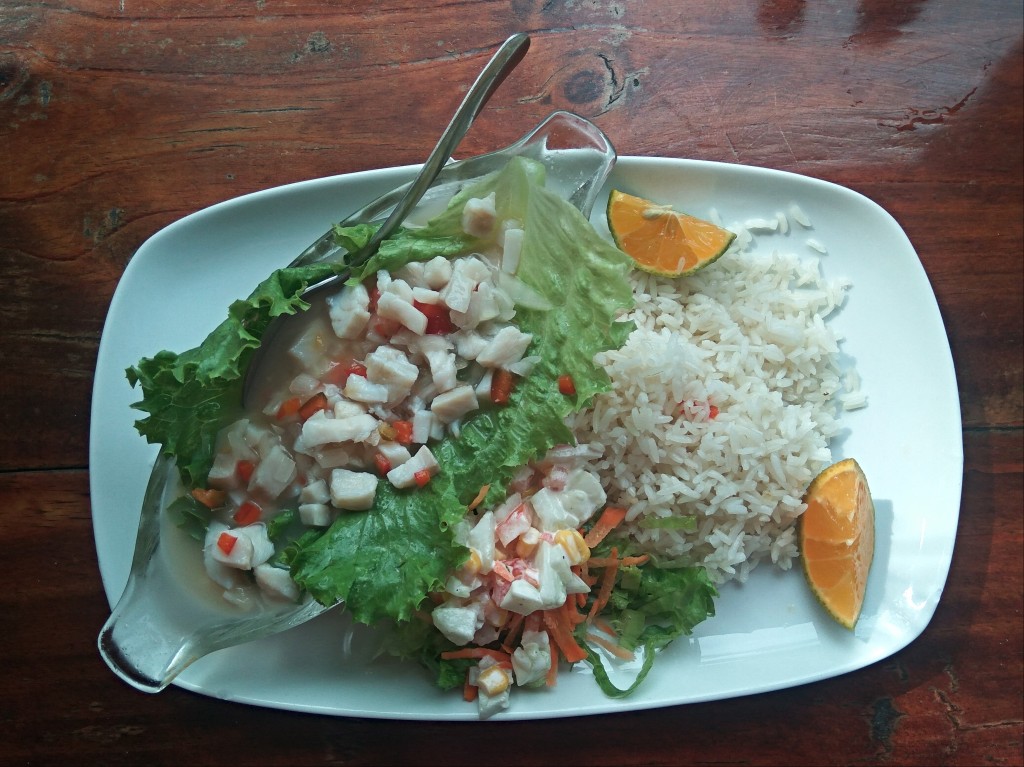
Finally, lettuce will serve as a garnishing element, or as a base or ‘plate’ for ‘ceviche’.
13. Pumpkin – Ayote/Calabaza – ‘Sazon’
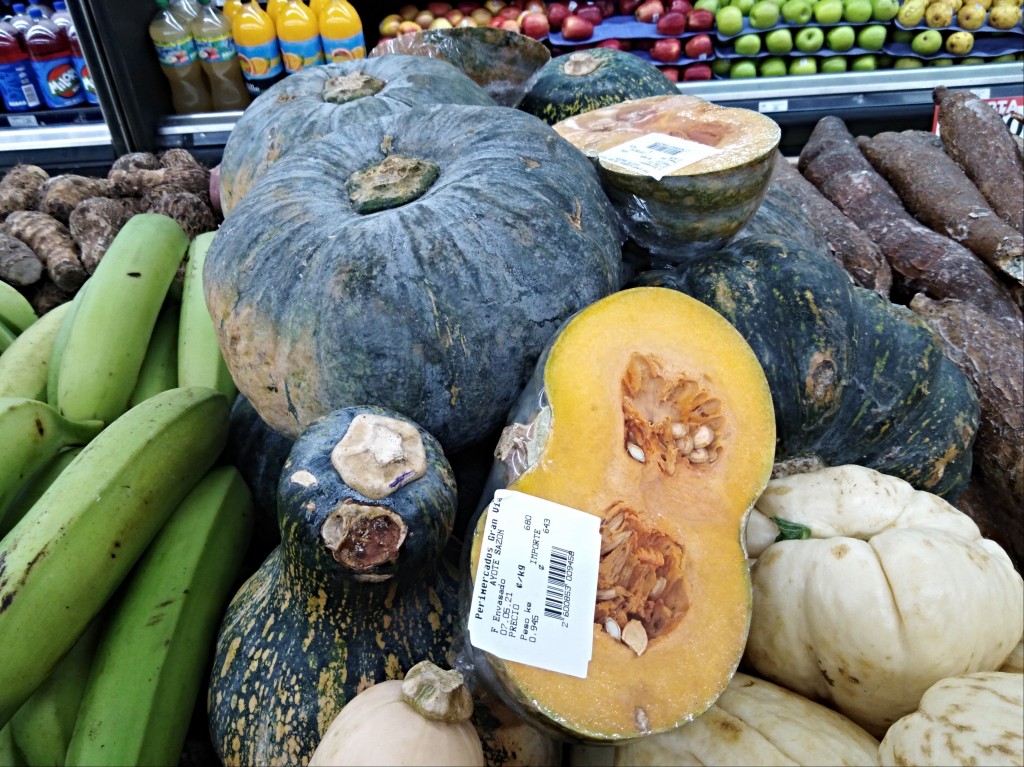
A regular orange pumpkin rather do not exist in Costa Rica due to the specific climate that is not suitable for the pumpkin cultivation. However, in Costa Rica exist a lot of other varieties of squash and among the most popular ones is ‘ayote’ or ‘calabaza’. This one is also the one that resembles partially a standard pumpkin. It is also round and relatively big. However, there is a couple of main differences that are visible at the first glance. First of all, ‘ayote’ is not orange but is dark green. The color is even in some parts almost black. When ‘ayote’ is ripe, then on the surface appear yellow tints, however they never cover the whole vegetable. This mature ‘ayote’ is called ‘sazon’ by local people.

Why do a regular pumpkin not exist in Costa Rica? The answer is quite simple – because of the rain. Long, rainy seasons are not good for many plants including pumpkins. But, Costa Rican indigenous people managed to grow some types of squash plants and one of the is ‘ayote’. It is resistant to heavy rains, diseases, parasites and insects. It has been cultivated since ages – its cultivation started before the colonization had begun. As ‘ayote’ plays an important role in the local agriculture, when the season starts, fresh food markets are plenty of them. They are relatively easy to grow and do not need a lot of care, and that is why so many smaller farmers have them on their fields.

‘Ayote’ is usually eaten in stews. The most popular one is Guieso de Ayote that is very similar to a regular picadillo prepared from chayote. If I had to describe it in almost one word – replace chayote with ayote and add at the end cream.

This squash can be eaten as almost all other, either when it is young or when mature and of the full size. When you decide to eat a ‘baby ayote’, you can eat it without peeling and after a short preparation time. However, when you decide to wait a couple of weeks more, when it is partially yellowish, then before cooking you should peel it. Otherwise, the needed time for softening the skin and the time needed for cooking the pulp would be diametrically different and it would be difficult to find an ideal moment to stop the processing.
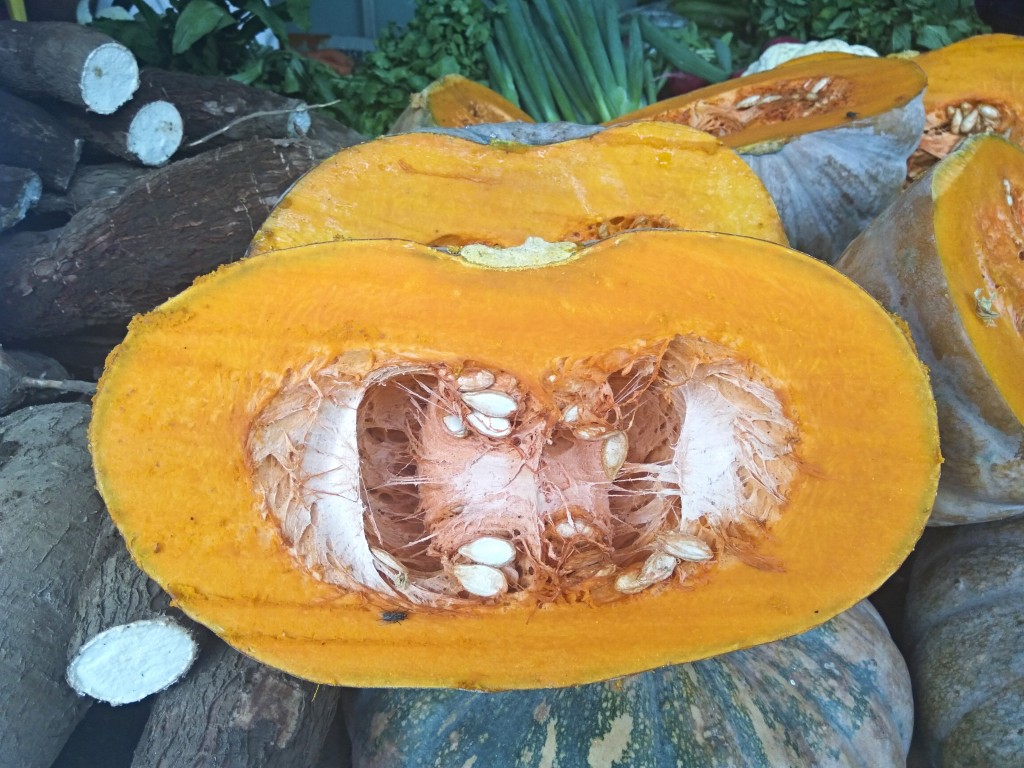
Apart from that, as ayote is a type of squh and so similar to a pumpkin, you can use it as a substitute in almost all pumpkin recipes. So, you can grill it, bake it, make a soup, stews or just to add any vegetable mix. Ayote will also be good for a pumpkin pie and for a pumpkin bread, so do not be misled by the name. if you are looking for something sweet that includes ayote, apart from a pumpkin pie you could prepare a candied ayote. Just peel it, cut into cubes, boil it in a small amount of water mixed with molasses sugar (or just sugar) and cinnamon. Then you can enjoy it as a dessert or add to a porridge, cornflakes or other desserts.
When the ayote is ripe, so it is ‘sazon’, you can prepare it in the same way as a standard pumpkin. So, before processing it, peel it. The most popular way of using it in Costa Rica, is to make an ayote soup or better to say - a soup cream known as ‘crema de ayote’.
14. Cauliflower
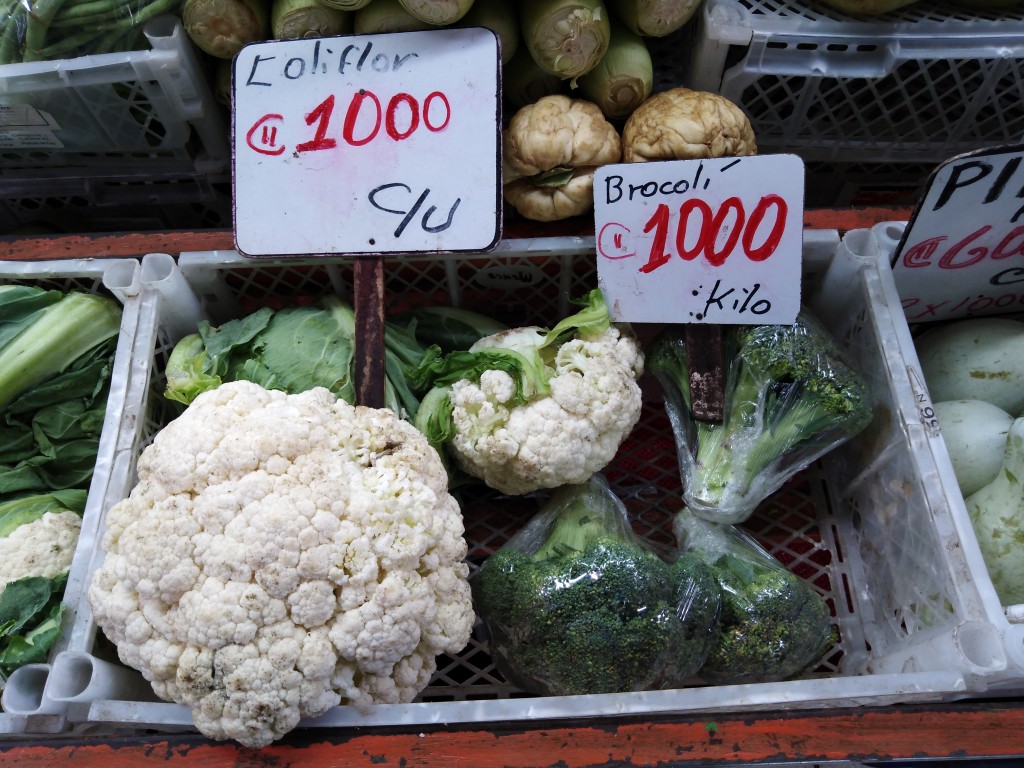
Cauliflower is another vegetable that you might get as a side dish or find it stews or salsa. However, as it is in the case of broccolis, it Is not the most popular vegetable.
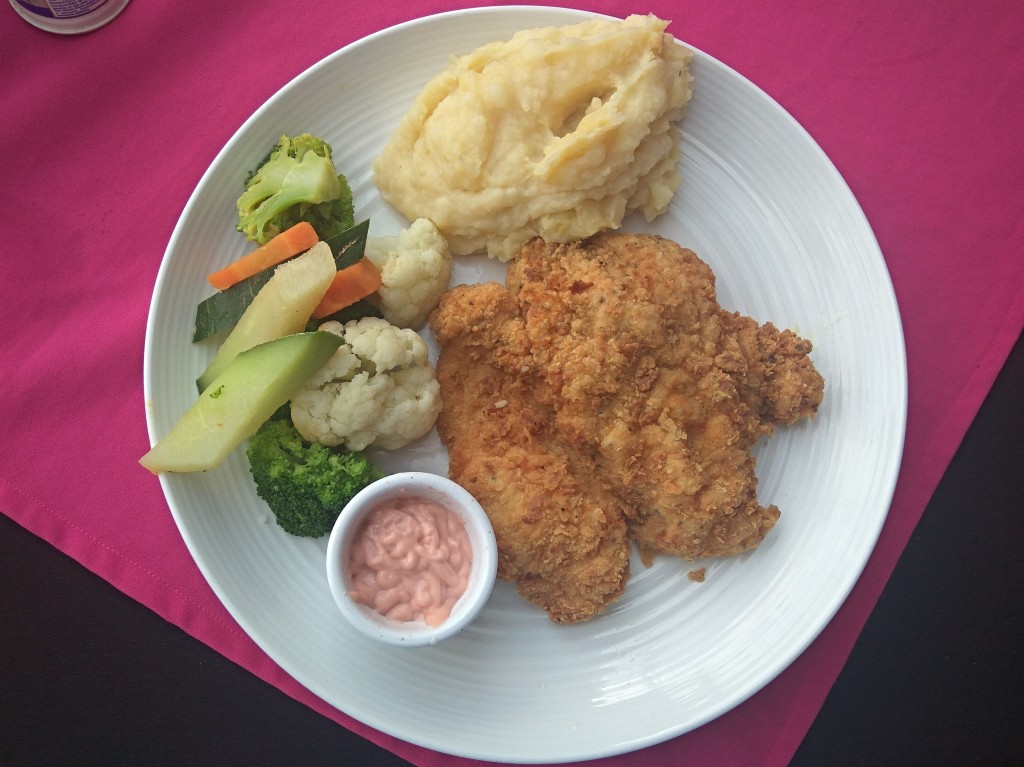
It is served boiled, cooked or fried. Chopped cauliflower is often consumed in a fried-stewed salsa dish with onions, sweet peppers, tomatoes, cilantro and eggs. Another popular in Costa Rica method of serving cauliflower is to add it to marinates and salads.
15. Broccoli

Getting a broccoli side-dish is very rare. If it happens, broccoli flowers are mixed with cauliflower, carrots and zucchini stalks and served stewed, boiled or slightly cooked.
Usually, they are served with light dishes like seafood or poultry meals. If served with fish or any seafood, broccolis are prepared with garlic and served with a lot of oil or margarine. There is no rule regarding the texture of the served side-dish.

Broccolis might be both extremely soft – for me overboiled, or al dente.
16. Dill
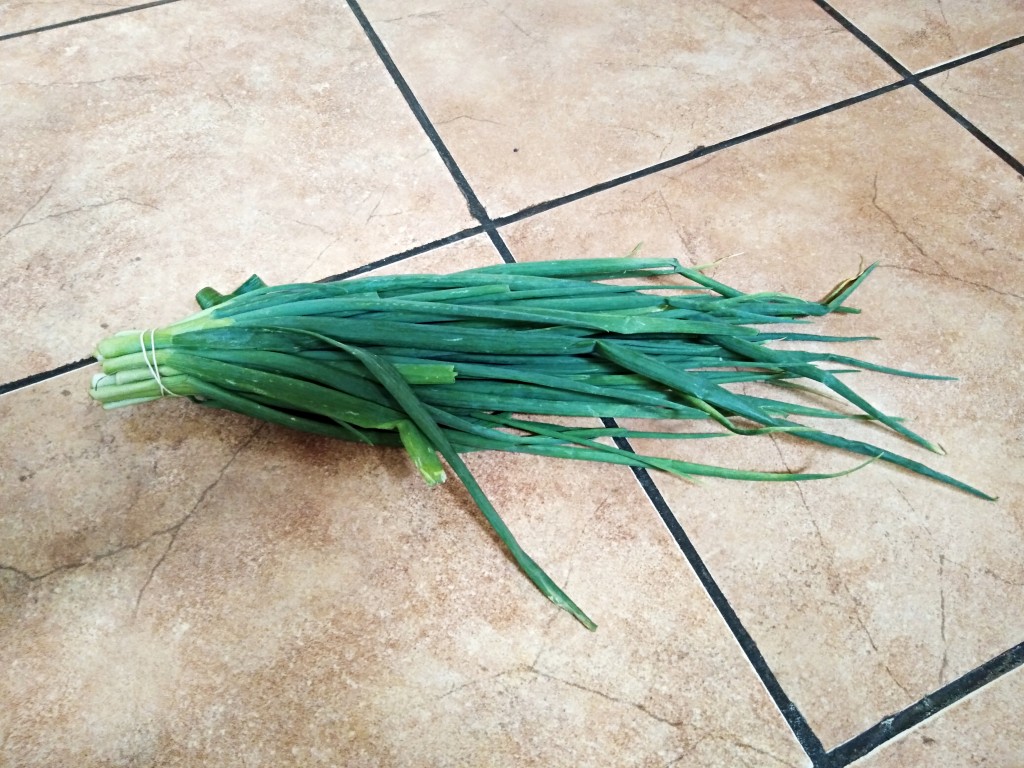
With a lot of flavor and aroma, dill is often used in different types of meals. Mainly that are rice or egg dishes, soups or seafood meals. Costa Rican dill has a strong onion flavor with slightly spicy notes.
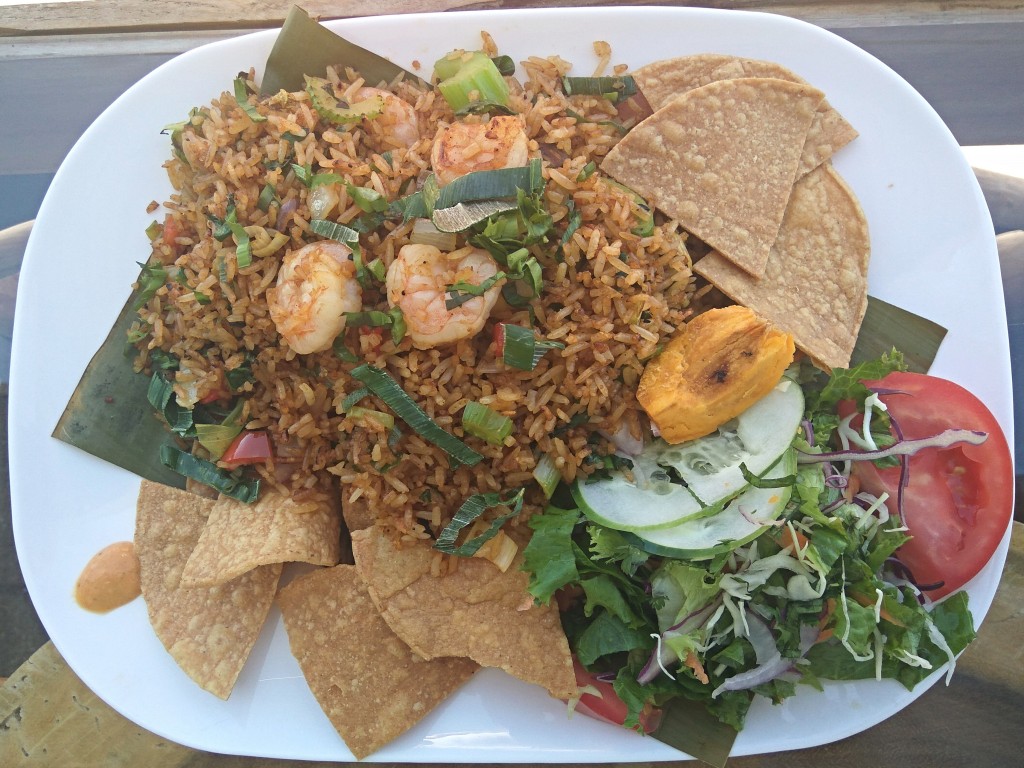
The most popular dish that includes dill are scrambled eggs with dill, grated cheese, and seasoned with salt and pepper.
17. Cabbage

To tell you the truth, there wasn’t a lot of places where we had cabbage. Sometimes it was added to side-dishes to main meals, but always it was in minority.

Either white or red, cabbage was julienned or finely chopped and mixed with tomatoes, salad, carrots and onion.
18. Cucumber
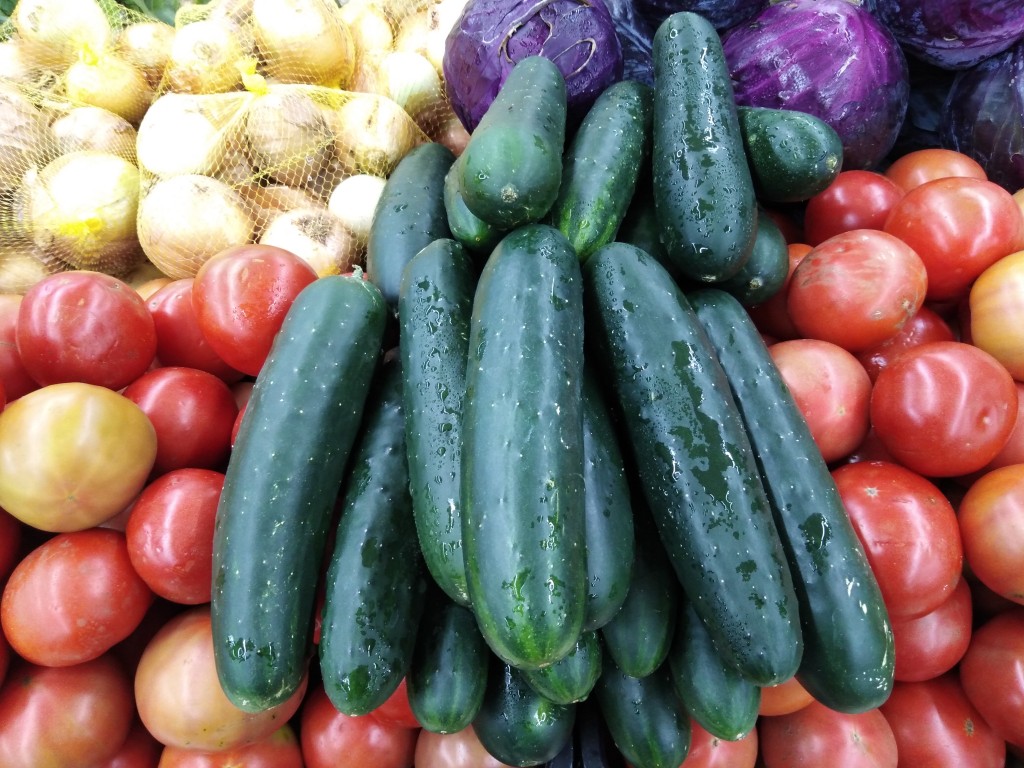
There is not a lot of ways of using cucumbers in the Costa Rican cuisine. It is not as popular as it is in other country, and it is definitively not eaten in the same way as it is in Asia where cucumbers are sold in peeled sticks as a hydrating snack.
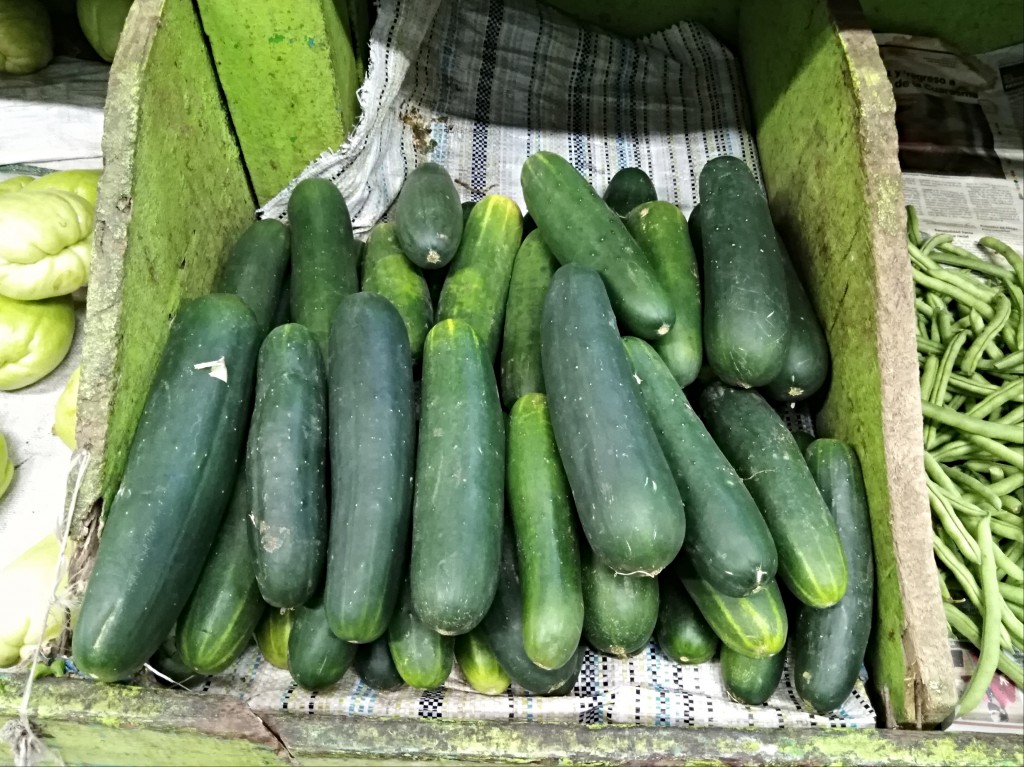
In Costa Rica cucumbers are usually added sliced to marinates - ‘chileros’, as a garnish or as a minor part in side-dish, raw salads.

Finally, they are used in healthy, functional drinks in combination with other fruits and vegetables.
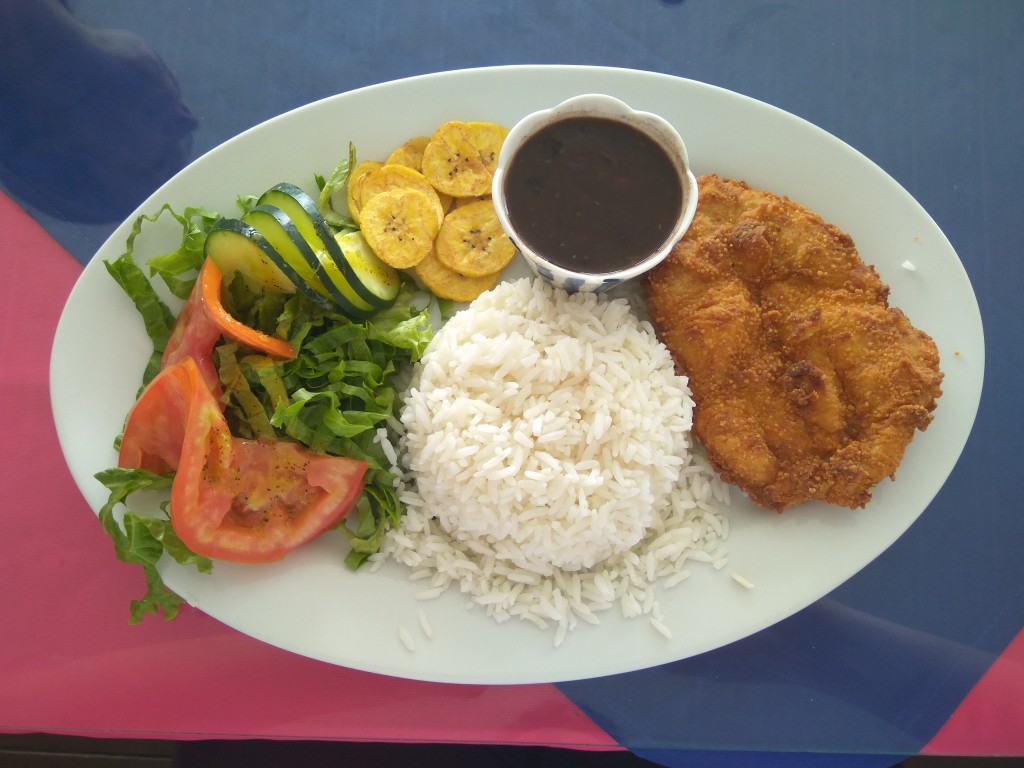
For example, cucumbers are added to mixed-fruit juices in combination with pineapples, celery stalks and parsley to promote diet control and detoxication of the organism.
Date: 2021-05-15
Author: Beti – A passionate traveler and lover of Asian cuisine, especially Thai and Japanese dishes, Bernadeta brings her culinary and cultural experiences to life in her writing. Beyond her travels, she’s an avid technology enthusiast with a deep interest in data processing, merging her love for exploration with analytical insights.
Photographer: Adalbert – An aficionado of computers and photography, Adalbert captures the essence of diverse cuisines with a discerning eye. A connoisseur of rich flavors and particularly fond of meat-based dishes, he combines his technical skills with his passion for the culinary arts in every shot.
